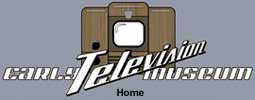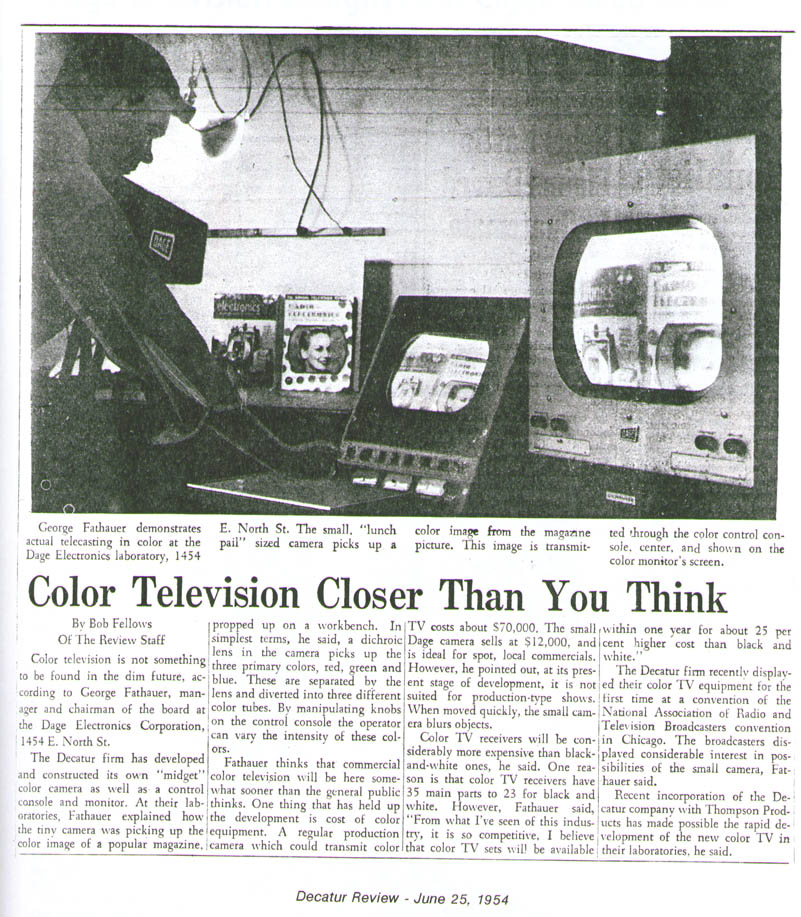Early Color Television George H. FathauerGeorge Fathauer founded a number of companies in the electronics business. Here are some quotes from a booklet he wrote in 1995:
Fathauer then founded Dage Electronics Corporation (Fathauer said the name Dage came from the first two letters of his brother's name Dave, and his first name George.
In 1954 Fauthauer developed the color monitor we have in our collection. Here is a newspaper article describing the equipment: In 1954 Fathauer sold Dage. After starting several other companies, he founded Antique Electronic Supply, now a major supplier of parts for antique radio restoration. In 1994 he sold the company. He then operated a firm that serves collectors with antique radio tubes. George died on December 22, 2014.
|

